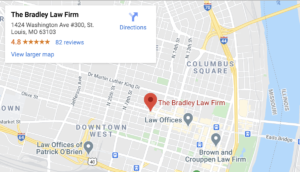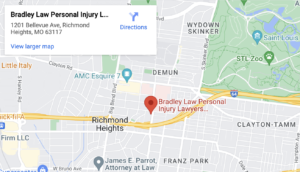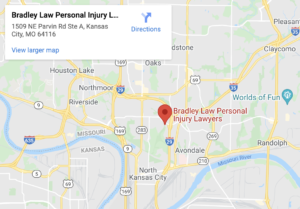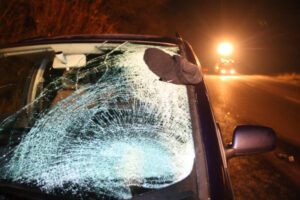
According to the NHTSA, about 40 percent of traffic accidents occur at intersections. Intersections increase the risk for vehicles to collide as drivers fail to yield the right of way. In some cases, the design of an intersection can be a contributing factor in some of the crashes.
Between 2016 and 2018, the Missouri Department of Transportation reported 127 fatalities at intersections with traffic signals. Another 357 people were killed during the same period at intersections without traffic signals.
In St. Louis, 65 people died, and 331 people were seriously injured in intersection accidents from 2016 to 2018.
Throughout the St. Louis area, many neighborhoods and areas have easy access to Route 141 and State Highway 44. Unfortunately, utilizing these roads may require drivers to merge over multiple lanes of traffic, traverse numerous bridges, pay close attention to changing speed limits, and deal with congested traffic.
Several roads throughout the St. Louis region intersect to create dangerous intersections. Many of these intersections have a high number of traffic accidents each year.
Table of Contents
Most Dangerous Intersections in St. Louis
Time Magazine analyzed ten years of traffic accident data to name the most dangerous intersection in each state. The most dangerous intersection in Missouri was in St. Louis, MO. The intersection with the highest rate of accidents was located at North Grand Boulevard and Montgomery Street.
Many of the dangerous intersections in the state are located in the St. Louis area.
Some of the dangerous roads and intersections in St. Louis include:
- Exit from Interstate 64 and Grand Boulevard
- Jefferson Avenue and Interstate 44
- Interstate 70 and Salisbury Street
- Interstate 64 and Kingshighway Boulevard
- Grand Avenue and Interstate 70
- Hampton Avenue and Interstate 64
- Union Boulevard and Bircher Boulevard
- Interstate 55 and Park Avenue
- Hampton Avenue and Interstate 44
All of the above intersections had dozens of traffic accidents each year. The tragic fact about many intersection crashes is that the collisions could have been avoided.
Why Do Intersection Accidents Occur?
A busy intersection can increase the risk of a crash. However, there are also other factors to consider. For example, human error can play a role in the cause of an intersection accident.
Common causes of traffic crashes at intersections include:
- Distracted driving
- Failing to yield the right of way
- Speeding
- Drunk driving
- Tailgating
- Drowsy driving
Defectively designed or poorly designed intersections can also contribute to the cause of a crash. For example, an intersection will not provide a sufficient line of sight to see oncoming traffic in some cases. In addition, traffic signals or signs might be inadequate to control traffic flow through the intersection.
Whatever the reason might be, the fact remains that dangerous intersections and roads cause thousands of deaths and serious injuries throughout Missouri each year.
Who is Responsible for an Intersection Accident?
The driver who caused the collision is liable for damages caused by the accident. However, you must prove that the driver caused the crash to recover compensation for your damages.
Evidence that might be used to prove fault in an intersection accident claim includes:
- Accident reports and police reports
- Videos of the collision from traffic cameras or other surveillance cameras
- Testimony from the drivers
- Statements from eyewitnesses
- Testimony from expert witnesses
- Physical evidence from the accident scene
- Cell phone records
- Data retrieved from various systems and recorders for the vehicles
- Data from insurance apps that track speed and other information about driving performance
The victim has the burden of proving that the other driver caused the crash. Most car accident claims are settled without filing a lawsuit or going to trial. In those instances, the parties negotiate a settlement for damages.
If the matter goes to trial, a jury determines which party to believe. Either party can appeal the verdict if they do not agree with the jury’s decision.
What Damages Can I Recover for an Intersection Accident in St. Louis?
The value of your personal injury claim depends on:
- The severity and type of injuries you sustained
- The amount of your economic losses (i.e., medical bills, travel expenses, personal care, lost wages, etc.
- The duration of your recovery
- Whether you could be partially to blame for the cause of the accident
- The availability of insurance coverage
- The willingness of the other party to negotiate a fair settlement in good faith
For a traffic accident at an intersection, the victims may seek compensation for their pain and suffering damages (non-economic damages) and financial losses (economic damages).
Examples of the types of damages that can be recovered in a car accident case include:
- The cost of medical care, including ambulance services, hospitalizations, physical therapy, doctor’s bills, medications, etc.
- The cost of personal care, including assistance with activities of daily living and household chores
- The loss of income and benefits, including reductions in future earning capacity
- Pain and suffering damages, including emotional distress, physical pain, and mental anguish
- Loss of enjoyment of life and a reduction in your quality of life
- Permanent disabilities, impairments, and disfigurement
You need proof of your damages. Therefore, keep copies of all receipts, bills, and proof of financial losses and expenses.
Also, it can be helpful to make notes about your experience during the healing process. For example, what was your daily pain level, your emotional state each day, and how did the injury impact your daily activities?
Is There A Deadline for Filing a Claim for an Intersection Accident in St. Louis?
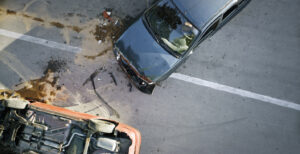
The Missouri statute of limitations for most car accident cases is five years from the car crash date. If you do not file a lawsuit before the time expires, you lose your right to pursue a claim against the other driver.
However, there are exceptions to the general rule. For example, the time to file a claim against a government entity is generally 90 days after the accident. Therefore, failing to file a notice of claim could result in losing the right to file a lawsuit.
Generally, it is best to talk with an accident attorney as soon as possible after a crash. Even if you have five years to file a lawsuit, waiting to speak to a car accident lawyer could result in costly mistakes.
Also, critical pieces of evidence could be lost or destroyed. An attorney can gather and preserve this evidence to improve your odds of winning your personal injury case.
We Also Handle
Contact Our St. Louis Personal Injury Law Firm for a Free Consultation
Our team of lawyers in St. Louis are here to help navigate the personal injury claims process and provide answers to personal injury FAQs. Contact our personal injury office to schedule a free consultation with one of our injury lawyers for a no-fee case review.


